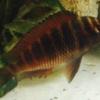
Got White Spot, Grrrrr
#1

Posted 31 January 2012 - 06:45 PM
Fish is a coral beauty, quarantined it for 2 weeks. Had nil signs of anything.
All water parameters are good.
The temperature has been fairly high over the last couple of days, up around 30 degrees, at 26degrees now...
It has only come noticeable this arvo....
Done some googling, but not much....
#2

Posted 31 January 2012 - 07:51 PM
http://www.perthcich...hp?showforum=56
#3

Posted 31 January 2012 - 08:09 PM
Excerpt below
There are only two proven methods for the treatment of Marine "Ich", copper and hyposalinity. Neither method can be used in the presence of elasmobranchs (sharks and rays) or invertebrates and so treatment must be performed in a quarantine or hospital tank. Hyposalinity is the preferred treatment as it is not dangerous to the fish and actually eases osmotic stress on the fish. Hyposalinity can also be performed in the presence of calcareous substrates.
For a more detailed description of hyposalinity, please see: Hyposalinity.
Copper is toxic to both fish and invertebrates and must be used with care. As calcium carbonate absorbs copper, copper cannot be used in tanks with calcareous substrates, such as coral sand or shell grit, or with coral decorations. Copper should not be used in the presence of invertebrates or elasmobranchs. Copper is not very stable in sea water and the levels must be continuously monitored.
Other methods for the treatment of marine "Ich" have been described, but, generally, they limited success. One of the problems with assessing treatment methods for marine "Ich" is that fish may recover through acquired immunity giving the impression that the treatment was effective when perhaps the fish would have recovered on their own.
It is worth noting that many people have had apparent success with adding garlic to the food of infected fish. Garlic is well know for its therapeutic effect, particularly in humans and it is possible that the same active ingredients may be effective in fish, too. As with other treatments, it is difficult to assess the effectiveness of garlic as a dietary supplement. The theory behind the use of garlic is to aid and strengthen the fish's immune system's ability to recognise and react to the parasite.
#4

Posted 31 January 2012 - 08:32 PM
#5

Posted 31 January 2012 - 10:11 PM
#6

Posted 31 January 2012 - 10:55 PM
#7

Posted 01 February 2012 - 03:18 PM
#8

Posted 01 February 2012 - 04:12 PM
Why is it that quarantine is so widely different in time frames....
White spot has a 8 day incubation period, True? The reason I only did a 2week quarantine.
What makes u say that 6 weeks is better than 2? I understand that the longer u have the fish in quarantine the better, but why so long?
And doing hyposalinity for such a long time in quarantine then putting the fish into a DT where the water parameters are obviously going to be different (salinity) levels, how does that make sense? It's only going to stress the fish out more...
Then to use copper to rid the disease, how is the fish not going to carry the copper itself to the DT, then corals and invertabrates are at risk...
Not trying to knock the responses i'm getting from u guys, just dont really understand why they are effective....
Anyone tried Garlic methods? I am putting lil bits of garlic with frozen seafood, The Coral Beauty seems to enjoy it... Hopefully it will boost its immune and fight the disease...
#9

Posted 01 February 2012 - 08:04 PM
After 6 weeks of quarantine with hyposalinity, there is as close to no chance of there being any ich left as possible. 2 weeks, as you have found out, is not long enough for all the ich to complete a lifecycle. They can stay in the tomont (reproductive stage) for upto 28 days.
Take your time acclimatising the fish, should be no problems. I used a large tub and air tube, slowly dripping water into the tub. Acclimatising would take about 2 hours, never had any problems with this method.
I never used copper, never needed to as hyposalinity always worked and was worried about the side effects.
And garlic, I always added it to my homemade foods. No idea if it had any effect what so ever, but it certainly didnt hurt
No, no it doesn't. It will kill some of the free swimmers, but every one that it doesn't kill can turn in to 200 more theronts. Same deal with a diatom filter. The evidence of these working is anecdotal at best, and its probably the fish gaining an acquired immunity.
Also before someone else adds this gem, cleaner wrasse don't help either, they feed mainly on the larvae of gnatid isopods throughout their life, and C. irritans theronts are never found in it's diet.
Edited by Niz, 01 February 2012 - 08:38 PM.
#10

Posted 02 February 2012 - 06:28 PM
How long will the whitespot stay in the tank for?
When is it safe to put another fish in? Obviously after quarantine....
Any fish not susceptible to marine ich? lol...
Thanks for the help/info guys.
#11

Posted 02 February 2012 - 08:40 PM
Quarantining won't help if ich is already present. If you can keep your tank fish-free for 30-60 days this should allow enough time for the parasite to die out without a host being present.
Daz
#12

Posted 02 February 2012 - 08:52 PM
Until it runs out of host fish
I would wait another 6 weeks, and carefully observe the remaining fish for signs of infection during this time. Putting another fish in before this time is a possible death sentence, continuation of the parasite life cycle, not to mention a huge waste of money.
To be really sure, and this is a major undertaking and a pain in the arse to be frank, removing all the remaining fish to a suitable quarantine tank using hyposalinity and without substrate for 6 weeks would eradicate all the ich in the fish, and in the display tank.
callionymids (dragonets), although once again the evidence to support this is anecdotal. They do however pose another problem of generally being difficult to feed.
Edited by Niz, 02 February 2012 - 08:55 PM.
#13

Posted 02 February 2012 - 11:01 PM
#14

Posted 03 February 2012 - 12:17 PM
Also, I have trails in my sand, right up against the glass, I saw a worm looking thing. NAy ideas what it is? Good or Bad?
#15

Posted 03 February 2012 - 02:08 PM
#16

Posted 03 February 2012 - 07:19 PM
#17

Posted 03 February 2012 - 07:48 PM
#18

Posted 04 February 2012 - 12:54 AM
Be careful with formalin. That stuff is nasty. Wear gloves and a mask. This site http://reefkeeping.c...08/sp/index.php has a good section on using it.
Prevention is the best cure. Always quarantine your fish. Short little statements. Seem to fit my mood atm. Need sleep perhaps
#19

Posted 11 February 2012 - 05:41 PM
Edited by blade111, 11 February 2012 - 05:44 PM.
#20

Posted 26 February 2012 - 10:14 PM
Many hobbyists are fooled into believing they have cured their fish of the parasites, only to find Ich present again on fish a few weeks later; a reason why following through with a full treatment protocol is so important. Don't make this mistake and be lulled into a false sense of security. The parasites may be in a stage where they are merely regrouping and multiplying for their "next offensive." In the wild, this sort of massive reproductive phase ensures that a few will find a suitable host to continue on the cycle. In the close confines of our aquariums, though, it means comparatively massive infection rates.
This disease is usually associated with several environmental triggers. Changes in water temperature, exposure to high levels of ammonia, nitrite, or nitrate, low pH levels, low dissolved oxygen often associated with overcrowding, are all factors contributing to the onset of the disease. You could lump all of these in a general category of "stress", but it is more appropriate to think of all of these as "unnatural conditions". In fact, Cryptocaryon irritans is rare in the wild even more unlikely to be lethal. Ich is truly a disease that exploits the conditions of captivity to reproduce and easily find suitable hosts.
By the way, trophonts are under the skin so cleaner wrasses and cleaner shrimp have no real effect on reducing this parasite.
Treatments which work and Myths and Truths about Marine Ich
Treatments which work:
1. Hyposalinity - Using a refractometer, hold salinity at 11ppt to 12ppt until 4 weeks after the last spot was seen. (Best to use salinity, but if you use specific gravity, that equates to roughly 1.008 to 1.009 sp. gr. units). Raise salinity slowly and observe fish for 4 more weeks. It is difficult to control pH and water quality during treatment, however this is the least stressful treatment for the fish.
2. Copper treatment - Follow medication recommendations. This can be effective in 2 to 4 weeks of treatment. After treatment, remove all copper and observe fish for 4 more weeks. Copper is a poison to the fish and creates some stress.
3.. Transfer method – The fish is moved from tank to tank to separate the fish from the cysts that fall off and the free-swimming stages of the parasite. Two hospital tanks are needed to perform this treatment. The fish is stressed by having to keep moving it between these hospital tanks.
4. These are the ONLY 3 known cures that work almost 100% of the time. Other chemicals will kill the Cryptocaryon irritans parasite, but only in special conditions that are not good for the fish. Some chemicals will only kill some of the organisms, letting the others escape death to go on to multiply and infect.
Direct copy from reef central- all credit to whoever originally posted it.
Edited by Clownman, 26 February 2012 - 10:21 PM.
0 user(s) are reading this topic
0 members, 0 guests, 0 anonymous users














